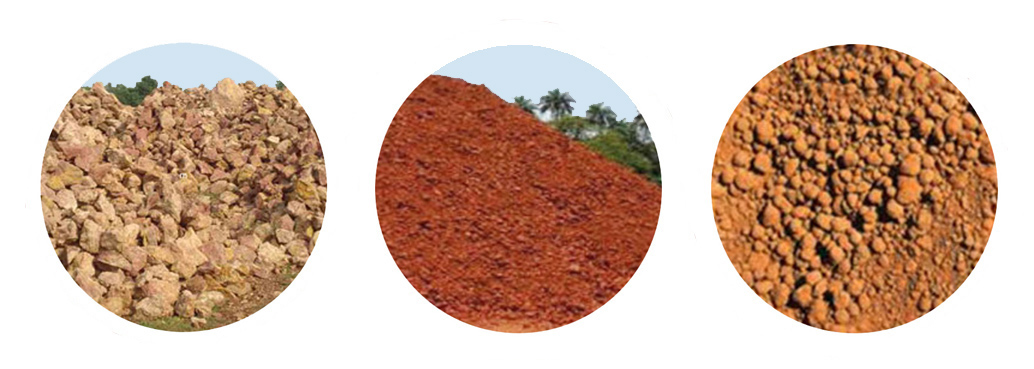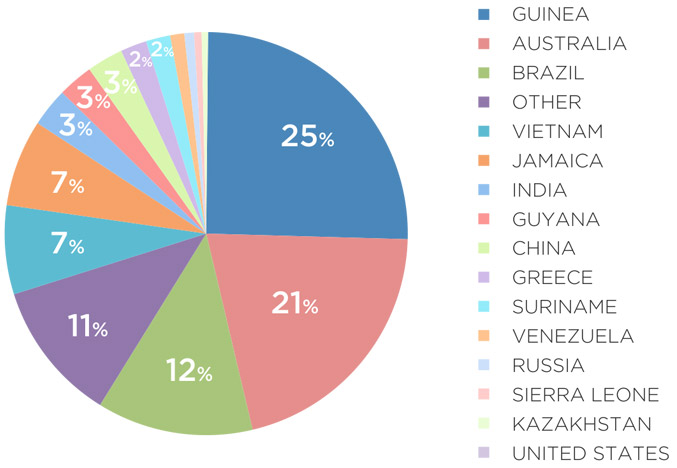



Bauxite is the primary mineral for alumina and thus ultimately aluminium production. It is named after the town of Les Baux in southern France, it was discovered in 1821 by Chemist Berthier.

Bauxite is widely distributed around the world, particularly in tropical areas. It is formed by weathering of aluminium rich rocks (clays, laterites, etc.) and the major deposits are therefore generally close to the surface.

The top 5 countries, Guinea, Australia, Brazil, Vietnam and Jamaica, hold over 70% of the world's documented bauxite resources.

The past 25 years has seen China fundamentally change the structure of the aluminium industry. Prior to 1999, no alumina or aluminium was produced in China but by 2018 this had changed so that China was responsible for 55% of global alumina and 57% of global aluminium production.
From 2013 to 2023, the annual output of alumina in China is estimated to increase from 46.53 million mt to 78.07 million mt, with a compound annual growth rate (CAGR) of 5.9%. 2013-2018 was the stage of rapid development of the Chinese alumina industry. The capacity utilisation rate peaked at 87% in 2017-2018, but kept falling thereafter and hit a low of 77% in 2020 before recovering slightly to around 80%. China’s alumina industry has risen from being a small player to the largest in the global arena, with a capacity CAGR 2005-2017 of 20.4% and a production CAGR of 19.4%.
China imported an estimated 141Mt of bauxite in 2023, up from 125 Mt in 2022, 107Mt in 2021 & 111Mt in 2020. This is expected to rise significantly in the short to medium term as Chinese domestic reserves decline in quality and quantity and imported bauxite is required to maintain production. As inland refineries adjust to import bauxite, the demand for imported bauxite will be positively impacted.

Source: CM Group / Shanghai Metal Market